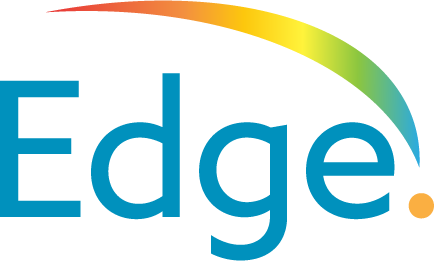At EdgeCon Spring 2025, Steven D’Agustino, Ph.D., Senior Director for Online Programs at Fordham University, delivered a thought-provoking presentation on the evolving role of AI in education. In this discussion, he explored foundational concepts like machine learning (ML), natural language processing, and neural networks, while examining the promise and pitfalls of AI integration. D’Agustino encourages educators to be curators, contextualizers, creators, and collaborators and ensure AI is used deliberately and equitably to benefit all students.
Bringing Technology into the Classroom
Beginning his career in education in The Bronx, D’Agustino taught English at Theodore Roosevelt and James Monroe High Schools to children who spoke languages other than English. After nearly a decade in the classroom, D’Agustino then transitioned into administration, taking on a role as an English department chair at a middle school in Rockland County, while also pursuing his Ph.D. “During this time, I decided I wanted to pursue a career in higher education,” shares D’Agustino. “I joined Fordham University as a director for a federally funded grant under Title II-D of the No Child Left Behind Act. This early 2000s project focused on bringing technology into classrooms by equipping public and non-public school teachers in The Bronx with laptop computers and training.”
D’Agustino guided teachers on how to use this new technology through professional development sessions at Fordham University as well as weekly visits to their schools from an instructional technologist. Participating teachers received graduate credits and stipends as incentives. If teachers successfully completed the 10-month program, they received five laptop computers for use in their school. Recognizing that earlier efforts to support schools had been disrupted by staff turnover and school closures, D’Agustino responded by launching a more sustainable and community-centered initiative.
“We secured a grant to establish a 21st Century Community Learning Center in The Bronx that was specifically designed to support over-aged and under-credited high school students who were at risk of not graduating on time,” explains D’Agustino. “The center offered an innovative after school program that blended online learning with in-person academic support. Using an early learning management system called Plato Learning, (now Edmentum), students could retake courses like Algebra II online while working alongside licensed teachers trained in the platform.”
“When I asked the students about their process, they offered a striking insight. Since they already had the answer, they didn’t need to focus on finding it and could instead think deeply about why it was the answer. This truly shows the transformative potential of AI in education. AI is not a shortcut, but is a tool that can empower learners to engage more critically and reflectively with content and each other. Knowledge is deeply contextual and cultural and is shaped by the norms of the environments in which its produced and valued. In schools, certain types of knowledge and ways of knowing are often priveiliged, along with specific methods of demonstrating understanding. AI offers a unique opportunity to challenge and reflect on these ingrained preferences.”
— Steven D’Agustino
Senior Director for Online Programs,
Fordham University

“While understanding foundational knowledge remains essential, our culture often lacks deep reflection and historical awareness. This dynamic adds complexity to how artificial intelligence is integrated into education. AI challenges educators to rethink not just how we teach, but what it means to teach and learn in a rapidly evolving world. Traditional models, where instructors hold the answers and students passively receive them under controlled conditions, may no longer be adequate.”

“Part of the work is to think about effective methodologies that would be able to integrate AI, but that conversation begins with deeper questions about practice: What are you doing? Why are you doing what you’re doing? How do you know you’re doing it? The emergence of AI in education is similar to the earlier wave of technology integration, when simply placing laptops in classrooms prompted educators to rethink their approaches. AI is another kind of provocation and can promote inquiry-based student-centeredness and constructivism. AI is forcing higher education to confront its core pedagogical assumptions and reconsider what meaningful teaching and learning should look like in a digitally evolving world.”
During the next several years, the center evolved into a vibrant hub of academic assistance, mentorship, and community service. It became a fieldwork site for social work students, provided tax preparation and financial planning support with help from the university’s accounting faculty, and partnered with local organizations to distribute desktop computers to families. Fordham University also donated fifty free dinners a week and set up mentoring sessions where college students could connect with high schoolers over a shared meal.
Through these efforts, what started as an afterschool program transformed into a comprehensive, community-based model for educational equity and student support.
The program quickly grew beyond its original scope and the center started opening earlier and earlier and eventually included weekends. This unique community space partnered with the Boys and Girls Club across the street to introduce Wii Fit-based PE classes. “Believe it or not, the credit that prevents students from graduating more than any other is physical education,” notes D’Agustino. “Since this program required the use of technology, we gave students devices to track things like blood pressure and heart rate.”
The center’s comprehensive, student-first approach gained national attention and the program was featured in a compendium highlighting innovative education grants across the U.S. Over its six-year run, the center helped approximately 2,500 high school students graduate and demonstrated the power of combining academic support, community partnership, and creative problem-solving. “Building this program sparked my transition into supporting the development of online courses and programs and ultimately led to my role as Fordham’s first Director of Online Learning.”
Transforming Teachers into Creators
With a focus on supporting the development of online programs and courses at the graduate level, D’Agustino says he partnered with faculty to bring the entire undergraduate core online for Fordham’s School of Professional and Continuing Studies. “Much of my writing and publications center on effective instructional practices within technologically integrated environments, with a particular emphasis on issues of access and equity in education. I also continue to teach undergraduate students as an adjunct instructor at the university and am involved in a grant-funded initiative known as the Fordham Science and Technology Entry Program (STEP) which supports middle and high school students, primarily from The Bronx and surrounding areas.”
Through this program, students gain hands-on learning experiences that incorporate AI and digital media. Activities include using AI tools to design podcast logos, learning audio editing software, and exploring advanced language models for creative and academic purposes. “I’m particularly interested in how large language models can support both instructional design, such as lesson planning, and post-instructional tasks like assessments and discussions. I also think about inquiry-based learning, especially within online and technology-integrated spaces. The structure of many online platforms can hinder engagement and curiosity.”
“Online spaces transform teachers into creators of content and learners into consumers of that content,” continues D’Agustino. “While instructors have broad capabilities in most learning management systems, students often do not. This lack of agency can make it difficult to create true spaces for play, experimentation, and collaboration.” Reflecting on his earlier work with technology integration, D’Agustino recalls giving teachers laptops and training them on digital tools. “Looking back, there was an important assumption built into that model: that every instructor has a teaching methodology that is fully developed and coherent, but that is not always the case. This continues to shape how I think about educational technology and its real impact on pedagogy.”
For D’Agustino, the integration of AI into education isn’t just a technical shift, it’s a philosophical one. “Part of the work is to think about effective methodologies that would be able to integrate AI, but that conversation begins with deeper questions about practice: What are you doing? Why are you doing what you’re doing? How do you know you’re doing it? The emergence of AI in education is similar to the earlier wave of technology integration, when simply placing laptops in classrooms prompted educators to rethink their approaches. AI is another kind of provocation and can promote inquiry-based student-centeredness and constructivism. AI is forcing higher education to confront its core pedagogical assumptions and reconsider what meaningful teaching and learning should look like in a digitally evolving world.”
In examining how traditional educational structures are being carried over into online environments, D’Agustino says educators often replicate the constraints of physical classrooms in digital platforms and miss the opportunity to rethink what learning can look like in a virtual context. “Rather than leveraging the limitless and flexible nature of digital spaces, these environments are often designed with outdated metaphors that can limit innovation. There is tension between possibility and passivity, and we must step away from familiar paradigms and envision new models for teaching and learning in digital spaces that are more imaginative and student centered.”

Modernizing Teaching and Learning Methods
While reflecting on the cultural context in which teaching and learning take place, particularly in the United States, D’Agustino says our society tends to prioritize the present and future over the past. “While understanding foundational knowledge remains essential, our culture oftenlacks deep reflection and historical awareness.
This dynamic adds complexity to how artificial intelligence is integrated into education. AI challenges educators to rethink not just how we teach, but what it means to teach and learn in a rapidly evolving world. Traditional models, where instructors hold the answers and students passively receive them under controlled conditions, may no longer be adequate.”
“Instead, AI invites a deeper interrogation of educational power dynamics, agency, and the assumptions embedded in our teaching methods. I recently saw two students working together in the university’s learning commons. One student is writing on a whiteboard while the other is typing on a laptop. They had uploaded their teacher’s lecture slides into a large language model in order to do a side-by-slide explanation. Rather than passively accepting the AI’s output, the students actively critiqued and discussed it, translating the explanation into their own language on the whiteboard. Once they reached a shared understanding, one of them transcribed the final version.”
What stood out to D’Agustino was the collaborative nature of the process—not just between the two students, but also involving the teacher (via the original slides) and the AI tool. “There were “four people” in the room: the teacher, the two students, and the “artificial person,” says D’Agustino, “When I asked the students about their process, they offered a striking insight. Since they already had the answer, they didn’t need to focus on finding it and could instead think deeply about why it was the answer. This truly shows the transformative potential of AI in education. AI is not a shortcut, but is a tool that can empower learners to engage more critically and reflectively with content and each other. Knowledge is deeply contextual and cultural and is shaped by the norms of the environments in which it’s produced and valued. In schools, certain types of knowledge and ways of knowing are often privileged, along with specific methods of demonstrating understanding. AI offers a unique opportunity to challenge and reflect on these ingrained preferences.”
With AI capable of providing immediate answers, the urgency to recall and reproduce information diminishes. “This shift creates space for a deeper exploration of meaning: not just what the answer is, but why it matters and how it came to be,” says D’Agustino. “Such a change, however, isn’t just a matter of adopting new tools. It calls for a fundamental reimagining of how teaching and learning are structured and one that balances critical inquiry with the development of core competencies—ones that have often been marginalized in traditional models. As technology, including AI, takes on more of the cognitive load, there’s a growing need to lean into what is distinctly human: agency, creativity, collaboration, and other humanistic qualities. These competencies not only support deeper learning but also prepare students to navigate complex, dynamic environments where ethical reasoning and interpersonal skills will be increasingly vital.”


